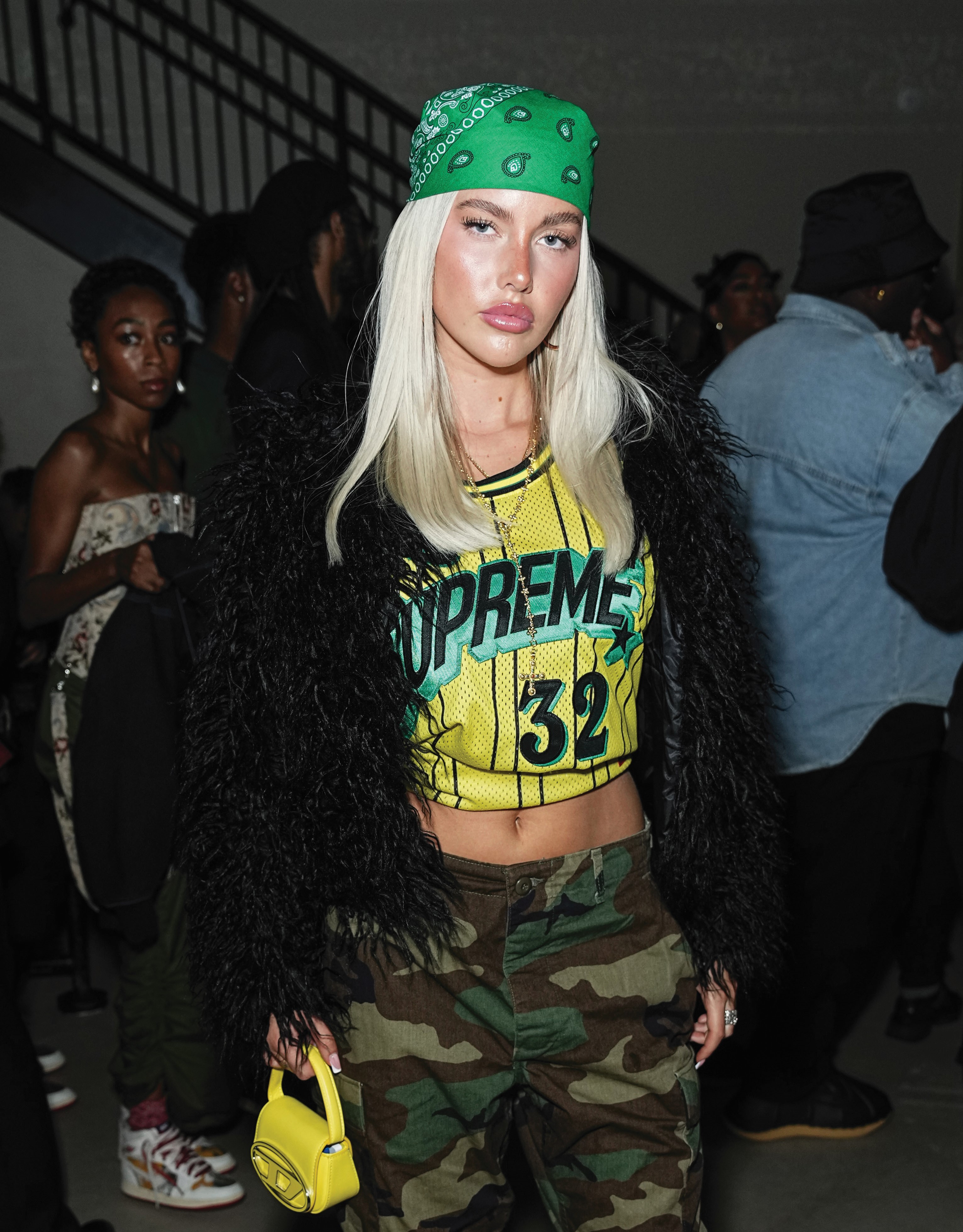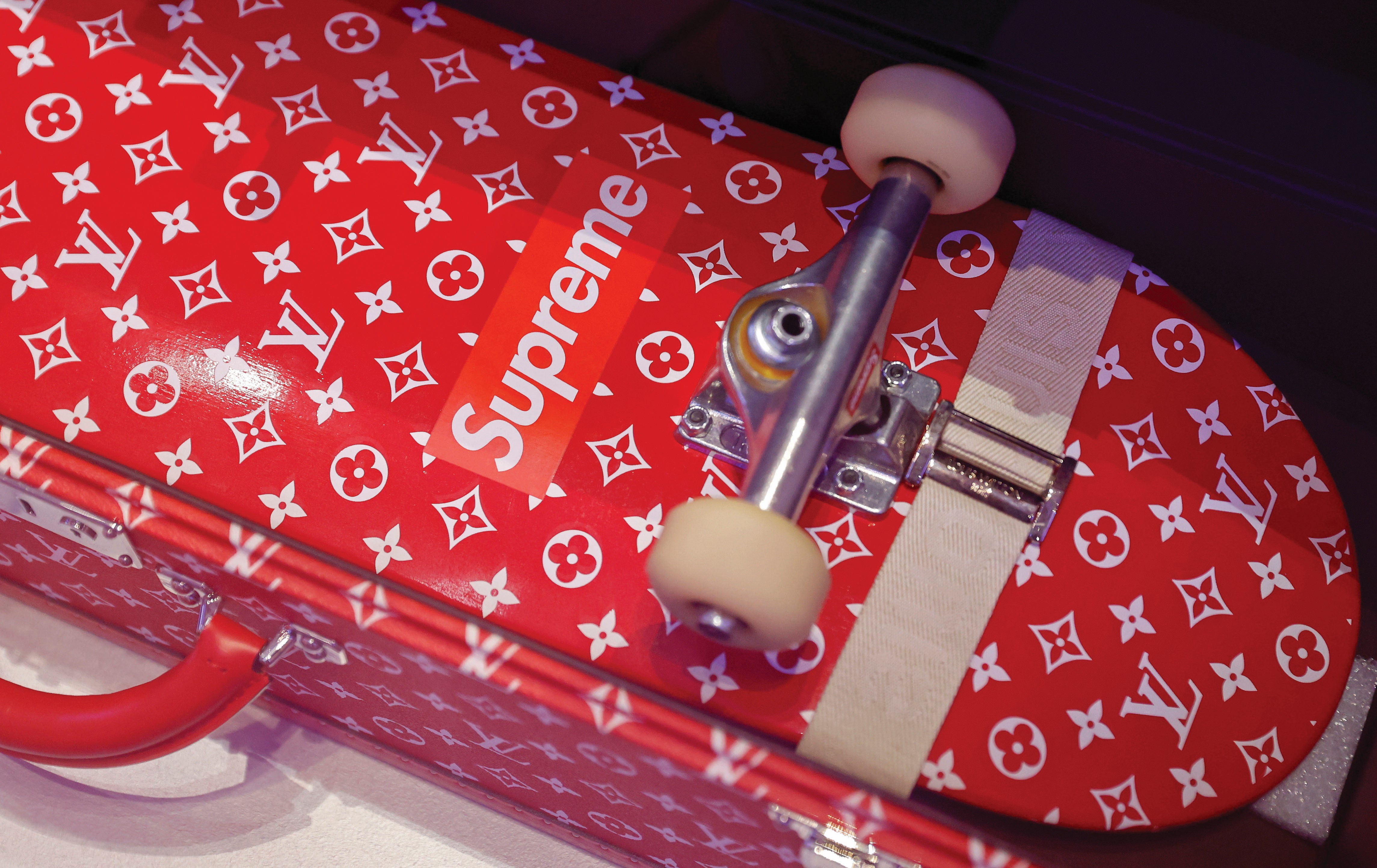
Thirty years ago, the idea of ultra-expensive caps, hoodies and sneakers emblazoned with designer logos was unheard of. But once Supreme opened as the new kid on the block in Manhattan’s Soho neighborhood in 1994, the way people dress and what consumers perceive as covetable luxury irrevocably changed.
Not that it was founder James Jebbia’s explicit agenda from the beginning. The U.S.-born, U.K.-raised one-time child actor returned to New York at age 19, where he found himself immersed in the city’s brewing subcultures and countercultures. Not to mention, he was inspired by what they were wearing. Around this time, in the mid 1980s, Jebbia landed a job at the New York outpost of influential Canadian boutique, Parachute, a downtown mecca that had become the go-to for the likes of Madonna, Mick Jagger and Andy Warhol.
Encouraged by the dedicated design-curious community that Parachute fostered, Jebbia opened the doors of his first retail venture, Union, in 1989. Considered one of the first shops of that era in Manhattan to mix cool youth-appropriate clothing, Union stocked plenty of British brands and quickly built up a cult following of its own. (Probably thanks also in part to the hip-hop music constantly on the speakers, unlike the city’s other shopping destinations!)
In 1991, Jebbia and Stüssy founder Shawn Stussy, an early adopter of purveying niche brands to an in-the-know crowd, joined forces. Stüssy had already established an impassioned community on the West Coast among surfers, skateboarders and skiers, and was a hot seller at Union. With new downtown digs for Stüssy in the Big Apple helmed by Jebbia, things really took off and word spread fast. The attention also helped Soho become the neighborhood of note. Curious clientele would descend from all over the city and country, ready to be presented with different ideas for what to wear in the experimental early ’90s. Fashion experts are adamant that Stüssy was the first fashion brand to make a desirable logo cap, which drew in fans from all over. In fact, John F. Kennedy Jr. is said to have got his favorite Stüssy hat from Union.
While acing multibrand retail and understanding how to market what was of the moment had cemented Jebbia’s profile, when Supreme opened its doors as a skate shop on Lafayette Street in 1994, that wasn’t translating into ringing cash registers. On the contrary, Phaidon’s glossy coffee table book “Supreme” documents that sales were initially meager. But when the lightbulb flashed for Jebbia that Supreme should make its own product that spoke to the cool kids on the street—it was a eureka moment.
“I guess the influence was the people who were around the shop— the skaters who were shopping,” Jebbia has said. “They would wear cool shit; they wouldn’t wear skate clothes. It would be Polo, Champion, a Gucci belt. But it’d also be another element—not skate, but a sensibility of being in New York.”

While today’s style connoisseurs follow that approach and pair high end with high street, but pre-Internet, it was a fresh idea. Likely spawned on by the “Lo Lifes” gang in nearby Brooklyn who were coopting Ralph Lauren’s preppy Polo clothes into their streetwear, Jebbia’s approach was a “remix” of current, vintage, workwear, streetwear and silhouettes by dominant designers of the time, like Helmut Lang, and ideas inspired by his travels to London and Japan.
Bingo! Even in 1995, Vogue compared the hype around the Supreme store to that of a Chanel boutique in Paris. Jebbia had started small—a few T-shirts, sweats, cargo pants and a backpack, released in tight quantities or “drops.” Product all bore that now instantly recognizable logo, which nods to the work of American conceptual artist Barbara Kruger. And everything was at affordable prices, too.
The shop itself was staffed with young skaters; boards were on the walls, videos of films played on loops and a Supreme magazine documenting the downtown scene was launched. It was more than just a retail store: it was a space. All of a sudden, the brand’s diehard fans, the Supremeheads, were born. Even now, you will still see lines of people forming outside one of the (only) 17 Supreme stores on “Drop Day.”
Of course, now the industry has adopted this approach to limited-edition clothing drops, but Jebbia has said the phenomenally successful business model was more necessity than anything. To begin with, the store didn’t know how the audience would respond to their product, so they were conservative with their orders. Still, they noticed early on that the anticipation and excitement for what was coming next and how to get a hold of it was the type of publicity money couldn’t generate. Adding to the obsession around these limited-edition drops, in the mid ’90s, the luxury houses in Europe were more focused on their leather-goods businesses and couture ateliers, and weren’t offering ready-to-wear. And American shoppers predominantly had become bored with the stale rotation of options—mall brands, sportswear, custom tailoring, ultra high-end designer and vintage.
Also central to Supreme’s success and global status has been its early adoption of the collaboration model. The honor list of Supreme collaborators reads like a recent history of pop culture icons, with drops launched alongside Comme des Garçons, Levi’s, Vans, Louis Vuitton, Damien Hirst, Takashi Murakami, Richard Prince and The Clash.
A recent report by Hypebeast and PwC uncovered that 74 percent of respondents in the United States and Europe think streetwear is always in style. It’s also considered the de-facto category of interest for those under 25 years old. And with the global streetwear market currently estimated at $185 billion—and projected to grow to $267 billion by 2032—we should all probably keep an ear and an eye turned to what’s going on outside.






















